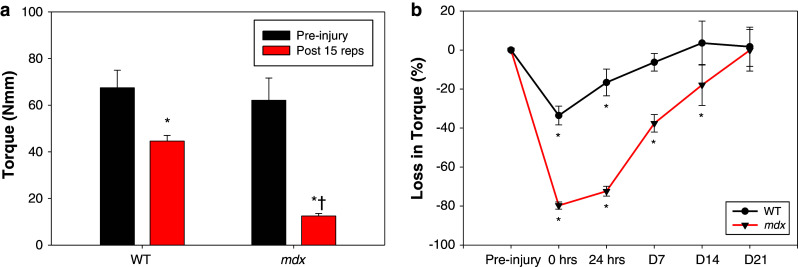Fig. 2.

Quadriceps injury and recovery. a Pre-injury torque produced from quadriceps muscles in healthy (wild-type, WT) and dystrophic (mdx) mice were similar with a maximal torque of 67.5 ± 7.5 and 62.1 ± 9.6 newton millimeters (Nmm), respectively. After 15 forced lengthening contractions, there was a significantly decreased torque production in both control (44.6 ± 2.4 Nmm) and mdx (12.5 ± 1.1 Nmm) quadriceps. However, despite an identical injury protocol, mdx mice experienced a dramatic 79.7 ± 1.8 % loss in force compared to 33.6 ± 4.8 % in WT mice. All data are presented as mean ± SD, p < 0.05. * indicates statistical significance from respective non-injured quadriceps. † indicates statistical significance from injured WT quadriceps. b The line graph shows the recovery of force production in quadriceps muscles of WT and mdx mice over time. Muscle force for WT mice reached pre-injury levels 7 days after injury; however, it took mdx mice 3 weeks for full recovery from force deficits. All data are presented as mean ± SD, p < 0.05. * indicates statistical significance from pre-injury (0 % loss in torque)
